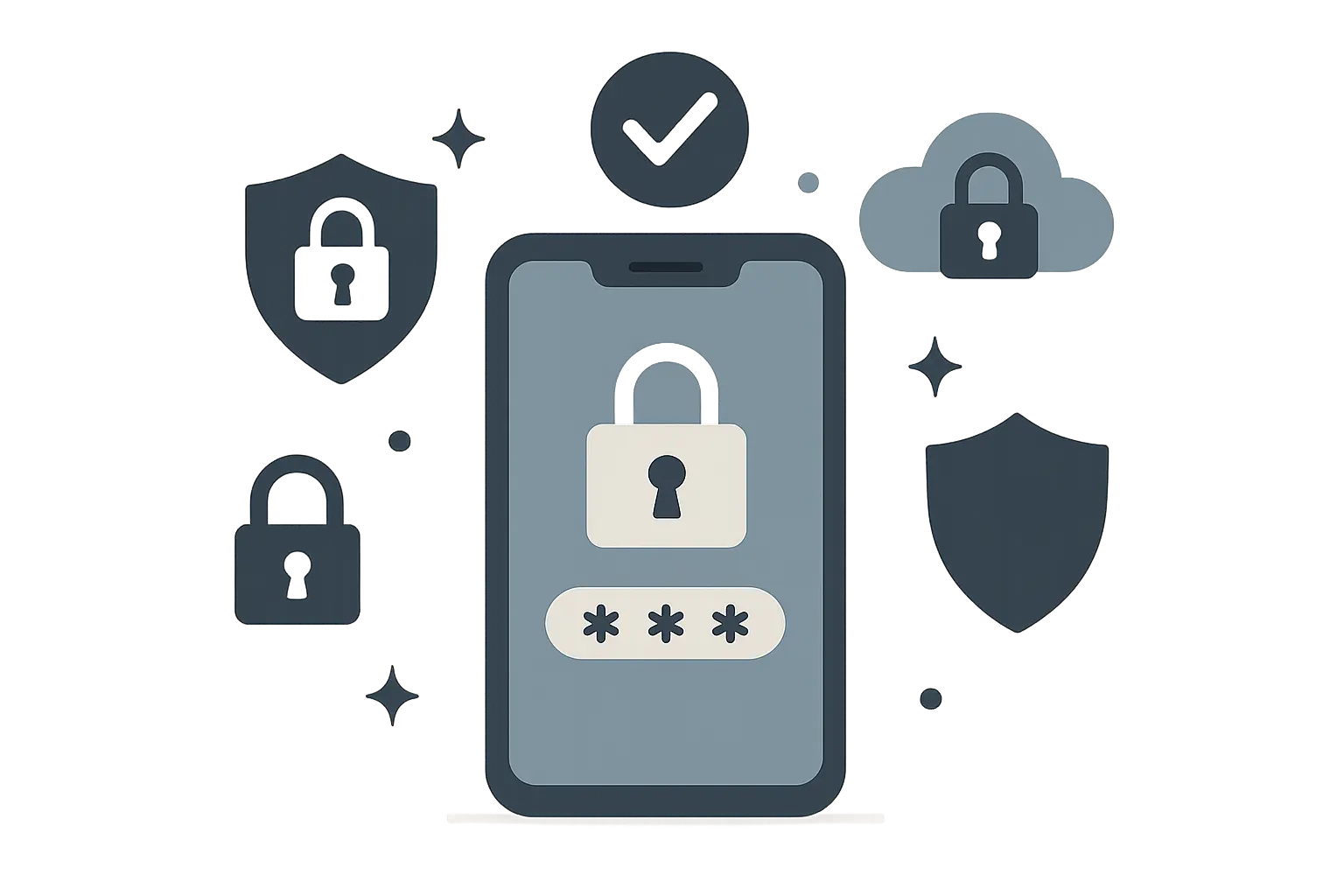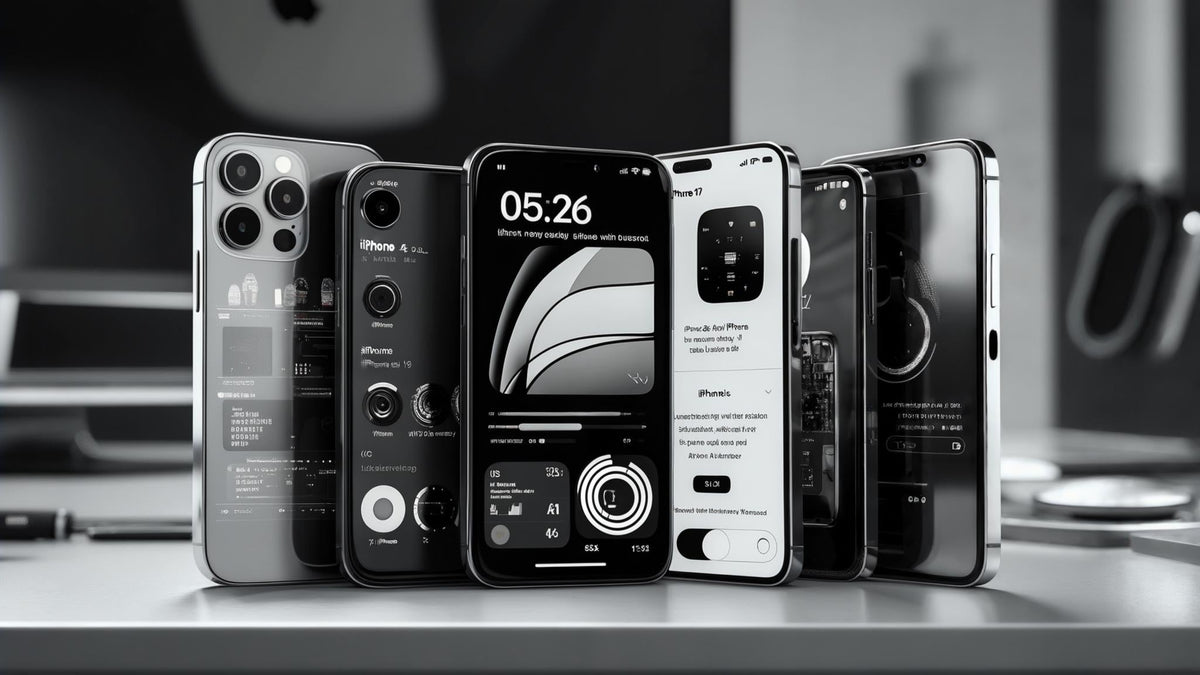Your phone isn't just a device—it's your digital wallet, photo album, office, and social hub all rolled into one. I've watched too many friends learn this the hard way when hackers got into their phones.
Here's the thing: with 87% of companies now having policies that integrate personal devices in the workplace, your smartphone has become a jackpot for cybercriminals. They know it, and they're getting smarter about breaking in.
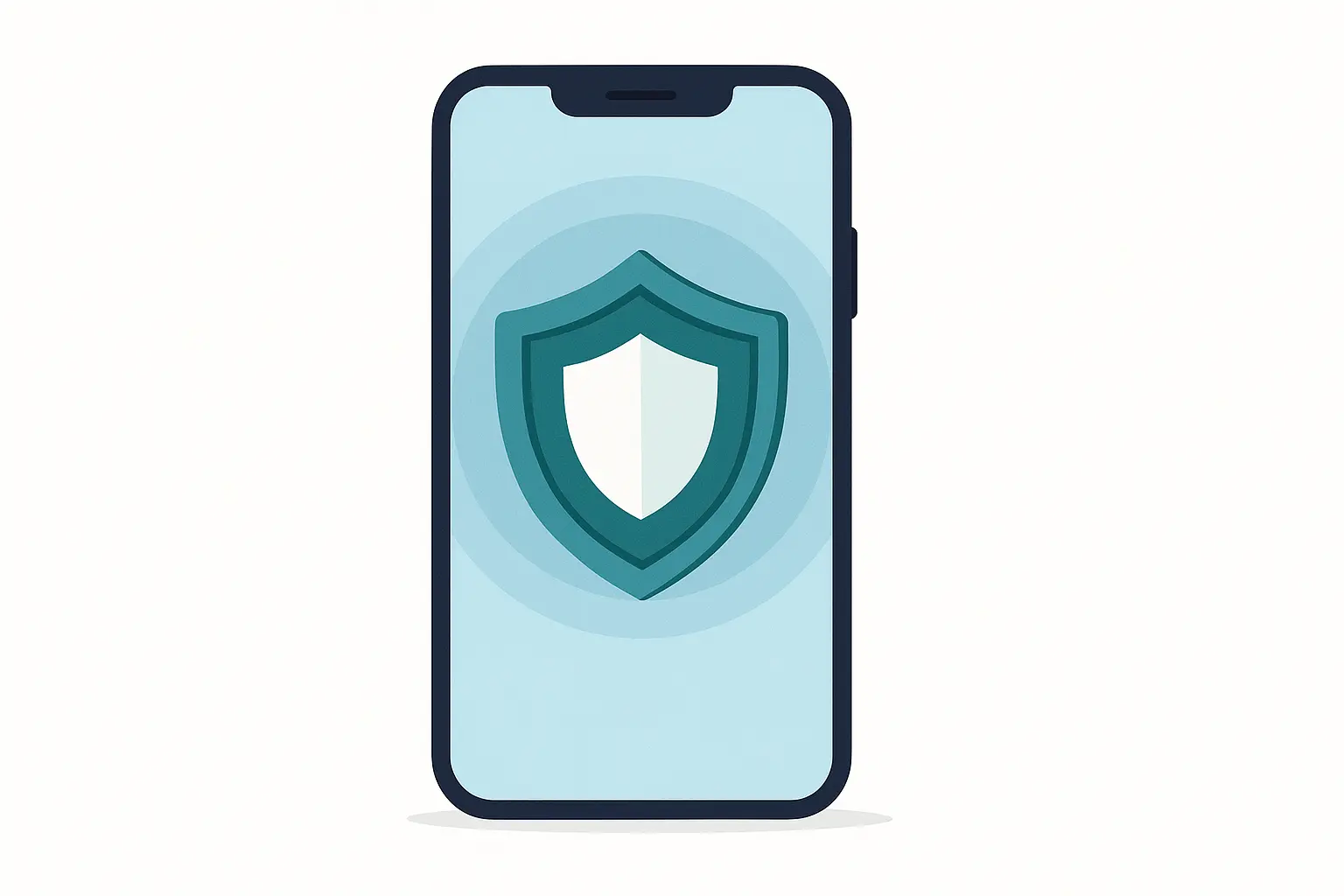
Let me show you how to actually protect yourself—not just the theory, but real stuff that works. We'll cover the threats you're actually facing, how to build defenses that matter, what to watch for when something goes wrong, and how to keep your security game strong long-term.
Table of Contents
The Three Ways Hackers Actually Get Into Your Phone
Setting Up Your Defenses (And Keeping Them Strong)
When Your Phone's Trying to Tell You Something's Wrong
If You Think You've Been Hacked
The Bottom Line
The Three Ways Hackers Actually Get Into Your Phone
The threats targeting your phone are more sophisticated than most people realize. I'm talking about criminals who set up fake Wi-Fi networks at coffee shops, malicious apps that slip past app store security, and psychology games that would fool anyone having a bad day.
You can't defend against threats you don't know exist. That's why understanding these attack methods matters so much—each one requires different defensive strategies.
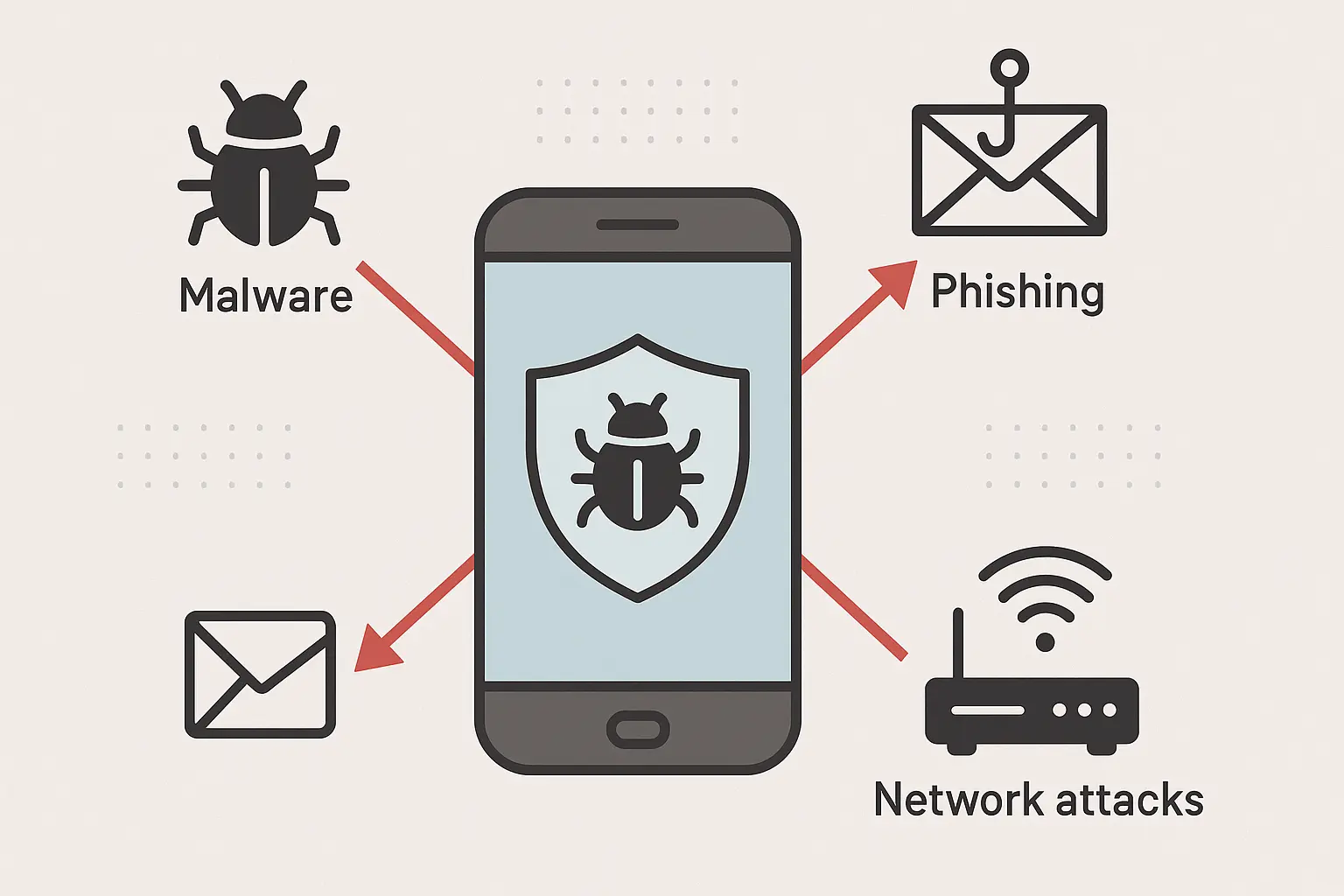
Fake Apps That Fool Everyone
That innocent-looking flashlight app? It might be stealing your contacts. Hackers create convincing knockoffs of popular apps, hoping you'll download them without checking carefully. They also develop trojans that appear to function normally while running malicious code in the background.
Even apps from official stores can be compromised. According to recent security research, 440,000 malicious apps had snuck onto phones globally by the end of 2023, highlighting the massive scale of this threat.
Always download apps from official stores like Google Play or Apple's App Store, but don't assume that guarantees safety. Before installing anything, read reviews carefully and research unfamiliar developers. Check what permissions an app requests—a flashlight app doesn't need access to your contacts or camera.
Take Mark's story: He downloaded what looked like a legitimate banking app after clicking a link in a phishing email. The fake app collected his login credentials and drained his account within hours. The real lesson? Always go directly to official app stores, never follow links to download apps.
Public Wi-Fi Traps
Coffee shop Wi-Fi is convenient, but it's also where hackers hang out. They'll set up fake networks with names like "Airport_Free_WiFi" (when the real one is "Airport_Guest_WiFi") and capture everything you do online.
Man-in-the-middle attacks happen when someone positions themselves between your phone and the internet, intercepting and potentially modifying your data. This can occur on compromised Wi-Fi networks or through fake cell towers that mimic legitimate ones.
Use a reputable VPN service whenever you connect to public Wi-Fi networks. Verify network names with the establishment before connecting—don't just pick the strongest signal. Avoid accessing sensitive information like banking or email on public networks, even with a VPN.
Consider Sarah, a business traveler who connected to what she thought was airport Wi-Fi. Unknown to her, this was a fake hotspot set up by cybercriminals. Within minutes, they captured her email login credentials and gained access to her work accounts. A single word difference in the network name cost her company thousands in compromised data.
The Psychology Game
Sometimes hackers don't bother with fancy tech—they just trick you. That urgent text about your "compromised" bank account? The caller claiming to be from Apple support? They're betting you'll panic and hand over your info.
These social engineering attacks create artificial urgency to prevent you from thinking critically about their requests. Common tactics include fake security alerts, phishing messages that look like they're from your bank, and calls from people claiming to be tech support.
Be skeptical of any unsolicited communication asking for personal information or immediate action. Verify the sender's identity through a separate channel—if someone claims to be from your bank, hang up and call the official number. Never provide sensitive information through links in messages or emails.
Don't Forget Physical Access
Lost or stolen phones become goldmines of personal information if they're not properly secured. Thieves can access your accounts, steal your identity, or sell your personal data. Even brief access to your unlocked phone can be enough for someone to install spyware or change settings.
Enable strong lock screen protection using PINs, passwords, or biometric authentication. Set your phone to lock automatically after a short period of inactivity. The FTC recommends using at least a 6-digit passcode for proper security, as shorter codes are too easily guessed.
Consider what information someone could access if they got hold of your unlocked phone right now. That thought should motivate you to tighten your physical security practices.
When Hackers Get Really Serious
Most of us won't face state-sponsored attacks or zero-day exploits, but it's worth knowing they exist. If you're a journalist, activist, or handle sensitive business info, you might need extra protection beyond what I've covered here.
Modern spyware can be incredibly sophisticated, monitoring your activities, recording conversations, and tracking your location without obvious signs. Recent security analysis reveals that "malicious apps were downloaded 60 million times from official app stores in 2025 alone" according to Alexandru Cosoi, Chief Security Strategist at Bitdefender.
The scary part? Some of this advanced stuff eventually trickles down to regular criminal attacks. That sophisticated spyware designed for government targets? Give it a year, and script kiddies will be using simplified versions.
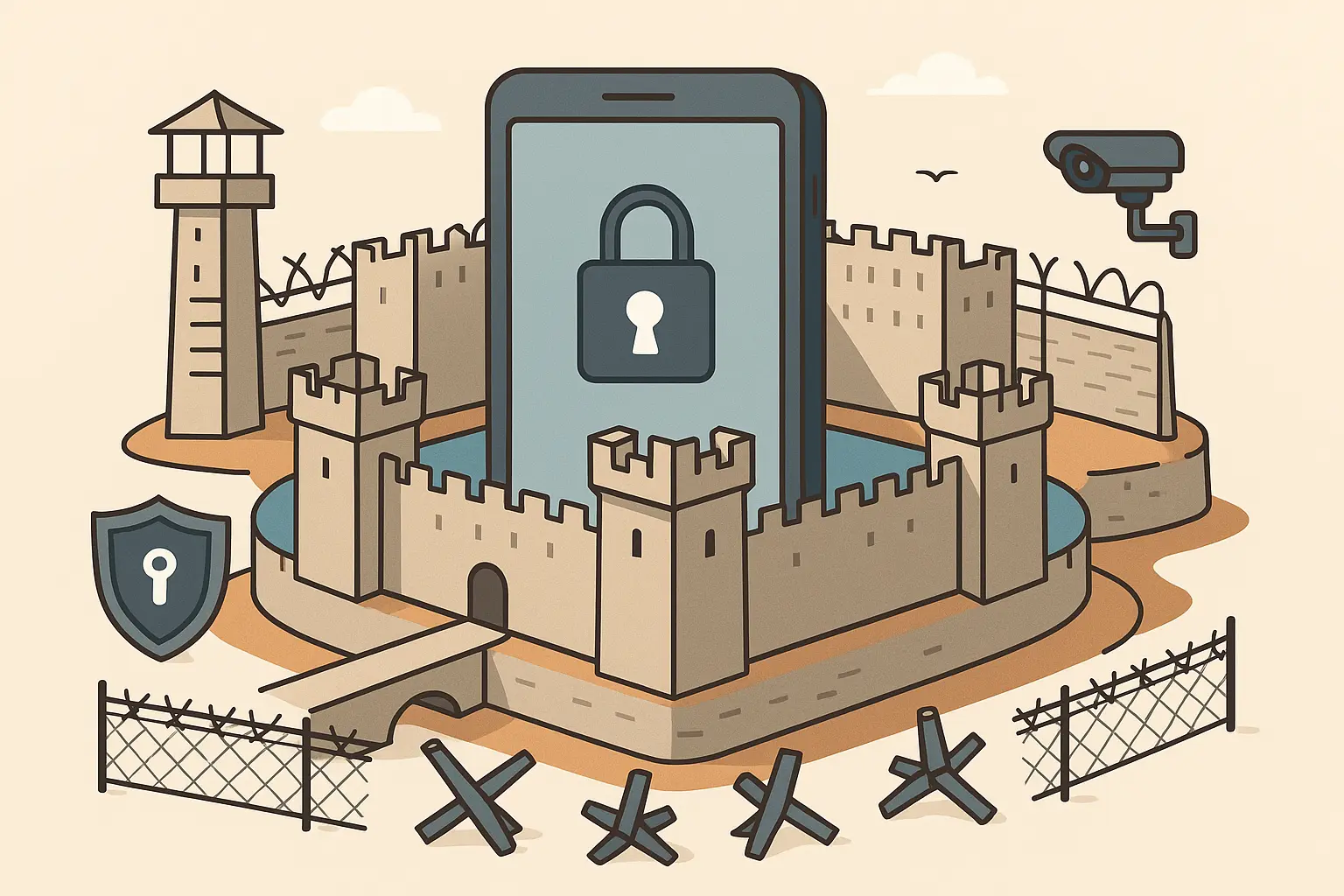
Setting Up Your Defenses (And Keeping Them Strong)
Effective phone security isn't about finding one perfect solution—it's about creating multiple layers of protection that work together. Think of building a fortress with multiple walls, guards, and alarm systems. If one defense fails, others catch threats before they cause damage.
The Basics That Actually Matter
Your phone's operating system is its foundation, and keeping it secure requires ongoing attention. A properly hardened system makes it much harder for attackers to gain a foothold, even if they manage to get past your other defenses.
Keep Everything Updated (Yes, Even When It's Annoying)
Software updates aren't just about new features—they're your primary defense against known security vulnerabilities. Cybercriminals actively exploit outdated systems because they know exactly which flaws to target.
Enable automatic updates for your operating system and critical apps. Check for updates weekly, especially for security-focused apps and your web browser. Don't postpone security patches, even if they seem inconvenient.
I know updates can be annoying, especially when they happen at inconvenient times. But the alternative—dealing with a compromised device—is far worse than a few minutes of downtime.
Only Download Apps From Official Stores (And Even Then, Be Picky)
Every app you install potentially creates a new attack surface on your device. Apps with excessive permissions can access far more of your personal data than necessary, and even legitimate apps can be compromised by attackers.
Read app reviews and research developers before downloading anything. Check what permissions an app requests and question whether they're necessary for its function. Regularly audit your installed apps and remove anything you don't actively use.
App Permission |
Legitimate Use Cases |
Red Flags |
|---|---|---|
Camera |
Photo apps, video calls, QR scanners |
Flashlight apps, simple games |
Microphone |
Voice recorders, calling apps, voice assistants |
Calculator apps, wallpaper apps |
Location |
Maps, weather, ride-sharing |
Note-taking apps, basic utilities |
Contacts |
Messaging, email, social media |
Photo editors, system cleaners |
Storage |
Media players, file managers, backup apps |
Simple games, basic calculators |
Use 2FA Everywhere Important
Multi-factor authentication adds extra layers of verification beyond just passwords. Even if someone steals your password, they still need additional factors like a code from your phone or a biometric scan.
Enable 2FA on all important accounts, prioritizing email, banking, and social media. Use authenticator apps instead of SMS when possible, as text messages can be intercepted. Keep backup codes in a secure location separate from your phone.
Mark, a small business owner, learned the importance of 2FA when his email password was compromised in a data breach. However, because he had enabled two-factor authentication using an authenticator app, the hackers couldn't access his account despite having his password. The second authentication factor stopped what could have been devastating.
Get a VPN for Public Wi-Fi
Virtual Private Networks create encrypted tunnels for your internet traffic, protecting your data from interception on unsecured networks. Use a reputable VPN service whenever you connect to public Wi-Fi networks.
Not all VPNs are created equal—free services often have privacy issues or security vulnerabilities. Invest in a quality VPN service if you frequently use public networks.
Biometric Security Done Right
Fingerprint scanners, face recognition, and voice authentication offer convenient security that's difficult for others to bypass. However, they need to be configured properly to remain effective.
Set up multiple biometric methods if your phone supports them, but always maintain a strong backup PIN or password. Clean biometric sensors regularly and re-register your biometrics if recognition becomes unreliable.
Remember that biometric authentication can be bypassed in some situations, so don't rely on it as your only security measure.
Monthly Check-ins
Once a month, spend 10 minutes cleaning house. Think of phone security like maintaining a car—you can't just set it up once and forget about it.
Delete apps you don't use, check what permissions you've granted, and look for anything weird in your battery usage stats. Review account login activity and verify that backup systems are functioning properly.
Monthly Security Audit Checklist:
Review and remove unused apps
Check app permissions and revoke excessive access
Update all software and security patches
Verify backup systems are working
Review account login activity for suspicious access
Check for unknown devices connected to accounts
Test remote wipe capabilities
Review and update passwords as needed
Set a recurring calendar reminder for these reviews—consistency is more important than perfection, and regular attention prevents small issues from becoming major problems.
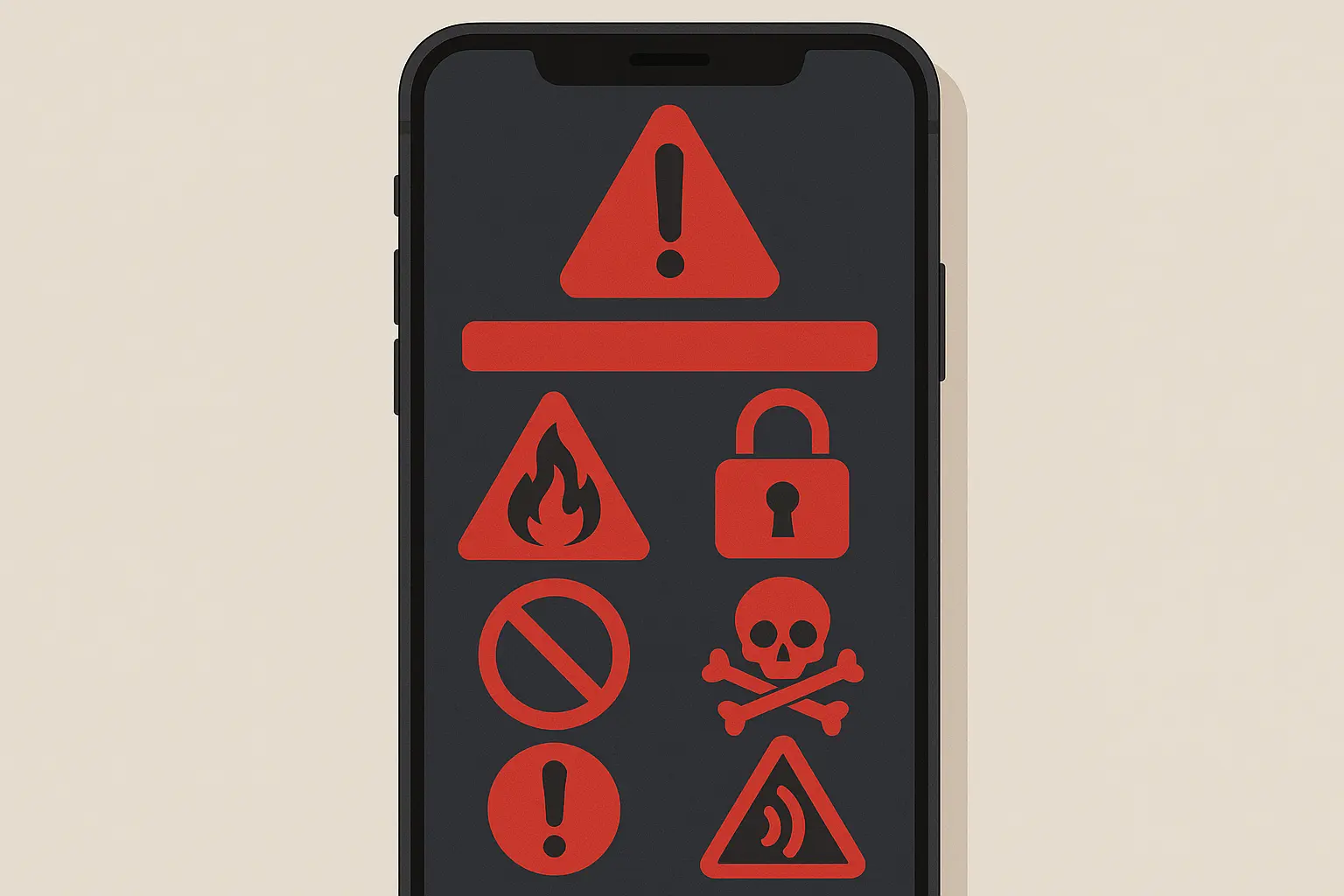
When Your Phone's Trying to Tell You Something's Wrong
Recognizing the early warning signs of a compromised phone can mean the difference between a minor security incident and a major data breach. Hackers rarely announce their presence—instead, they try to operate quietly while stealing your information.
Your phone usually gives you hints when something's off. Learning to spot these subtle indicators helps you catch problems before they escalate.
The Warning Signs You Can't Ignore
Compromised phones exhibit specific symptoms that differ from normal technical issues. These signs often appear gradually and can be easy to dismiss as regular phone problems. However, patterns of unusual behavior often indicate security issues that require immediate attention.
Battery Dying Faster Than Usual?
Malware loves running in the background, consuming system resources and causing noticeable performance degradation and battery drain. While these symptoms can have innocent causes, sudden changes in your phone's performance often indicate unwanted software activity.
Monitor your phone for unusual battery drain, especially when you haven't been using it heavily. Check which apps are consuming the most power and investigate any unfamiliar processes. Your phone's battery usage statistics can reveal hidden malware—look for apps you don't recognize consuming significant power.
Getting Hot When You're Not Using It?
Device overheating, slow performance, or frequent crashes can indicate malware activity. Hidden processes might be working overtime, causing your phone to overheat even during idle periods.
Friends Asking About Weird Messages You Didn't Send?
This is a classic hack symptom. Be alert if friends mention receiving suspicious messages from your accounts or if you receive unusual activity notifications from your online services.
Apps You Don't Remember Downloading?
Red flag central. Watch for apps you didn't install, changed security settings, new user accounts, or modified system configurations. Take screenshots of your current app list and security settings—this makes it easier to spot unauthorized changes later.
Security researchers report that over 2.2 million mobile cyberattacks were recorded worldwide in December 2022 alone, demonstrating the massive scale of current threats targeting mobile devices.
Warning Sign |
What It Indicates |
Immediate Action |
|---|---|---|
Rapid battery drain |
Background malware activity |
Check battery usage by app |
Overheating when idle |
Hidden processes running |
Force close suspicious apps |
Unknown apps installed |
Direct malware installation |
Uninstall immediately |
Unexpected data usage spikes |
Data theft in progress |
Review app data permissions |
Friends report strange messages |
Account compromise |
Change passwords immediately |
Disabled security features |
Attacker covering tracks |
Re-enable and investigate |
Don't ignore these signs. Sarah from accounting did, and hackers used her phone to send malware to her entire contact list.
If You Think You've Been Hacked
Don't panic, but move fast. Quick response to suspected compromise can prevent further damage and help you regain control of your device and accounts. Every minute of delay gives attackers more time to steal data or spread to your other accounts.
Recent cybersecurity analysis shows that "modern mobile malware is built to be silent and subtle, so that it can quietly collect your data without crashing your device or throwing up alerts," making quick response even more critical when you do spot warning signs.
Immediate Response Steps
When you suspect your phone has been compromised, immediate containment prevents further damage and stops ongoing data theft.
Airplane Mode Immediately
This cuts off the attacker's connection and prevents further data theft or remote commands. Disconnect from all networks by enabling airplane mode first.
Change Passwords From Another Device
Use a clean computer or tablet to change critical passwords—not the potentially compromised phone. Contact your mobile carrier to report potential compromise and consider temporarily suspending service.
Document What You're Seeing
Screenshots help later when you're trying to understand how the breach occurred. Document any evidence before taking corrective action.
When in Doubt, Factory Reset
Yeah, losing your data sucks. But losing your identity sucks more. If compromise is confirmed, perform a factory reset to eliminate all malware. Restore from clean backups that predate the suspected compromise.
Emergency Response Checklist:
Enable airplane mode immediately
Document suspicious activity with screenshots
Change passwords from a separate clean device
Contact your mobile carrier
Notify important contacts about potential compromise
Run security scan from trusted antivirus
Consider temporary service suspension
Learning From the Experience
When Lisa discovered her phone was sending spam messages to her contacts, she immediately put it in airplane mode and changed her passwords from her laptop. After running a security scan that found hidden spyware, she performed a factory reset and restored only essential data from a backup made two weeks earlier. This quick action prevented the attackers from accessing her banking apps and limited the damage to just the initial spam messages.
Consider this an opportunity to improve your security posture—analyze how the compromise occurred and implement better protections to prevent similar incidents. Share your experience (without sensitive details) with friends and family—your incident can help others avoid similar problems.
Don't Forget the Obvious Stuff
All the digital security in the world won't help if someone steals your phone. Physical security vulnerabilities create opportunities for direct device access, malware installation through USB connections, and theft of devices containing sensitive information.
Use a strong case that can survive real drops, enable remote wipe, and don't leave your phone sitting around unlocked. A cracked screen isn't just annoying—it can mess with your fingerprint sensor and other security features. Damaged phones with compromised protective barriers can develop vulnerabilities as biometric sensors malfunction.
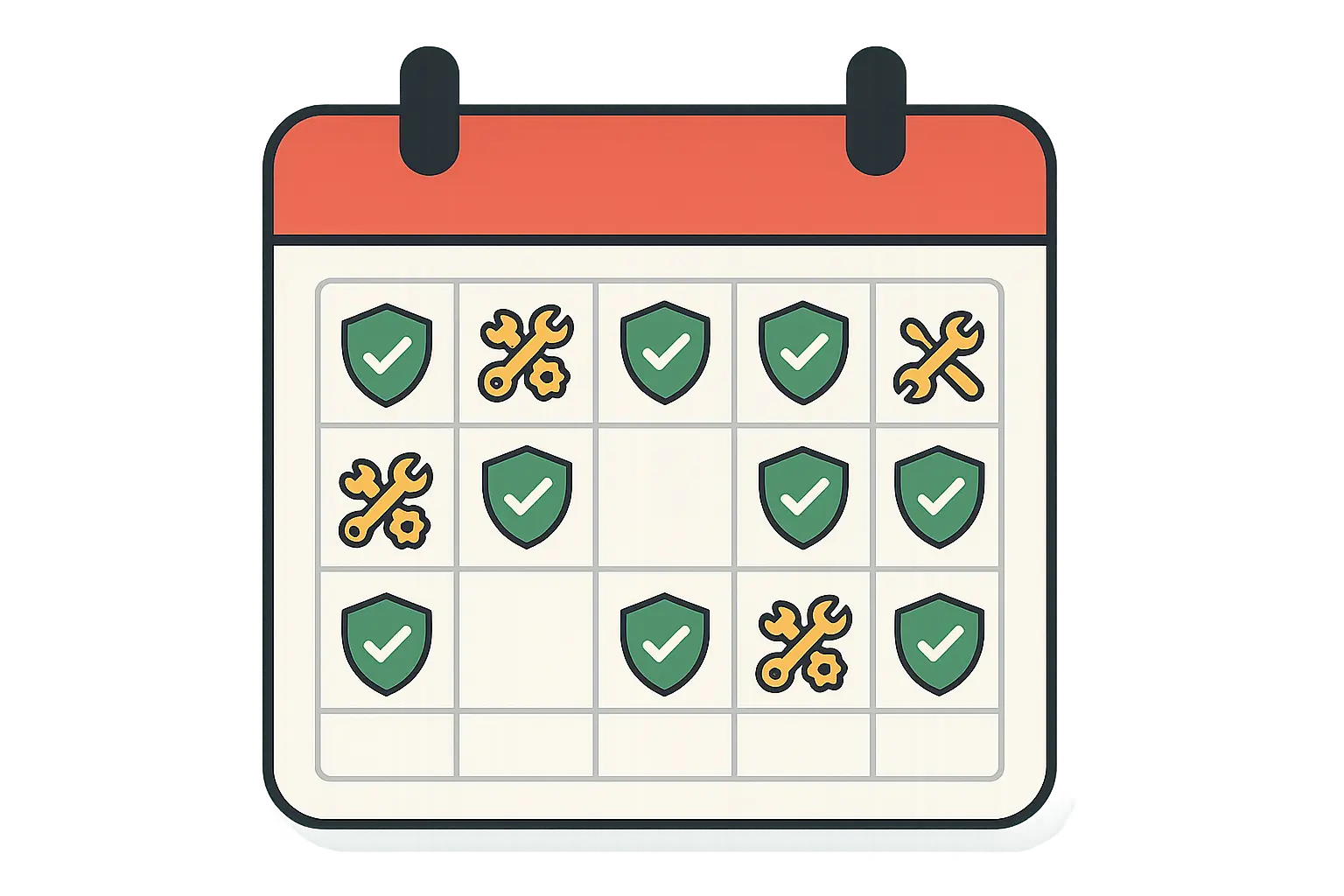
Military-grade cases provide reliable drop protection and secure mounting systems that help prevent device loss and unauthorized physical access. For professionals in high-risk environments—first responders, military personnel, or anyone who might be targeted by sophisticated attacks—reliable physical protection becomes even more critical.
Staying Ahead of New Threats
The mobile security landscape evolves rapidly as attackers develop new techniques and security researchers discover new vulnerabilities. Following reputable security sources and participating in security communities helps you stay informed about emerging threats.
Follow cybersecurity blogs, subscribe to security newsletters, and join online communities focused on mobile security. Pay attention to security advisories from your device manufacturer and major app developers.
Don't get overwhelmed by every security story you read—focus on threats that are relevant to your situation and device type.
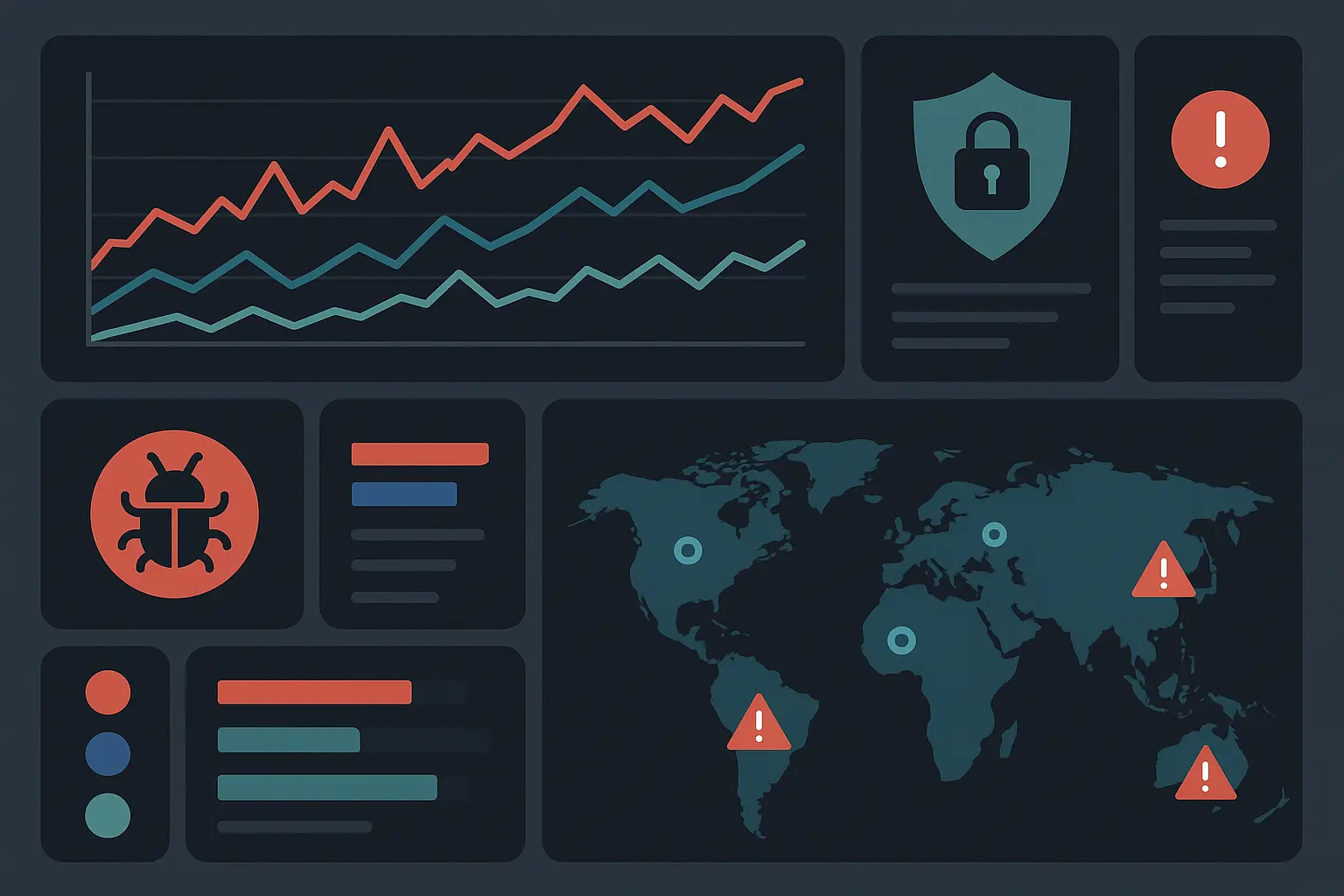
How Rokform Fits Into Your Security Strategy
While digital security measures protect against cyber threats, physical protection remains a critical component that's often overlooked. Your phone's physical security directly impacts its digital security—a damaged device with compromised protective barriers can develop vulnerabilities, and stolen phones create immediate access for attackers.
Physical security vulnerabilities create opportunities for direct device access, malware installation through USB connections, and theft of devices containing sensitive information. Rokform's military-grade cases provide 6-foot drop protection and secure mounting systems that help prevent device loss and unauthorized physical access.
The RokLock™ system and MAGMAX™ magnets offer secure mounting solutions that keep phones safely attached during activities, reducing theft opportunities and accidental loss. For professionals in high-risk environments—first responders, military personnel, or anyone who might be targeted by sophisticated attacks—reliable physical protection becomes even more critical.
Damaged phones with cracked screens or compromised cases can develop security vulnerabilities as protective barriers fail and biometric sensors malfunction. Rokform's durable polycarbonate construction maintains device integrity, ensuring security features continue functioning properly even in challenging conditions.
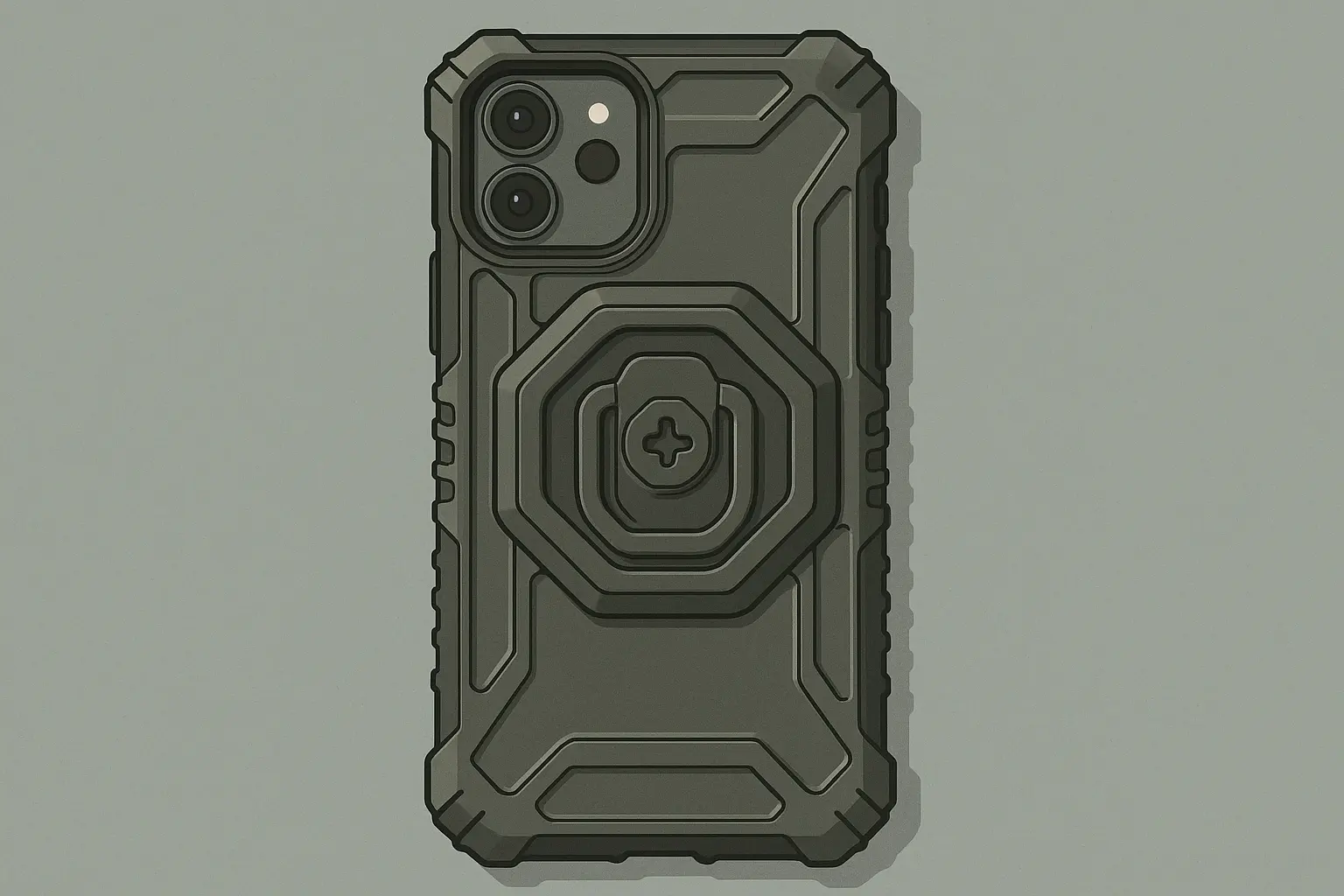
Ready to add military-grade physical protection to your security strategy? Check out Rokform's complete line of protective cases and mounting solutions designed to keep your device secure in any environment.
The Bottom Line
Your phone holds your life. Protect it like you would your wallet, your keys, and your home—because in many ways, it's all three rolled into one device you can't live without.
The threats are real and constantly evolving, but you don't need to become a cybersecurity expert overnight. Start with the basics: strong passwords, regular updates, paying attention when something feels off, and don't be an easy target. Most hackers go after low-hanging fruit, so don't be one.
Focus on implementing the fundamental protections we've covered—technical knowledge, good habits, and the right tools working together. Your phone contains your digital life: contacts, photos, financial information, work documents, and access to countless online accounts. Losing control of this device can have devastating consequences that extend far beyond replacing the hardware.
The good news? Most attacks target easy victims using basic techniques. By implementing strong authentication, keeping software updated, being cautious about apps and networks, and maintaining both digital and physical security, you make yourself a much harder target. Attackers typically move on to easier prey rather than investing extra effort to compromise well-protected devices.
Remember that security is an ongoing process, not a destination. Stay informed about new threats, regularly review your security practices, and don't hesitate to upgrade your protections when needed. The 20 minutes you spend securing your phone today could save you weeks of headaches later. Trust me on this one.
